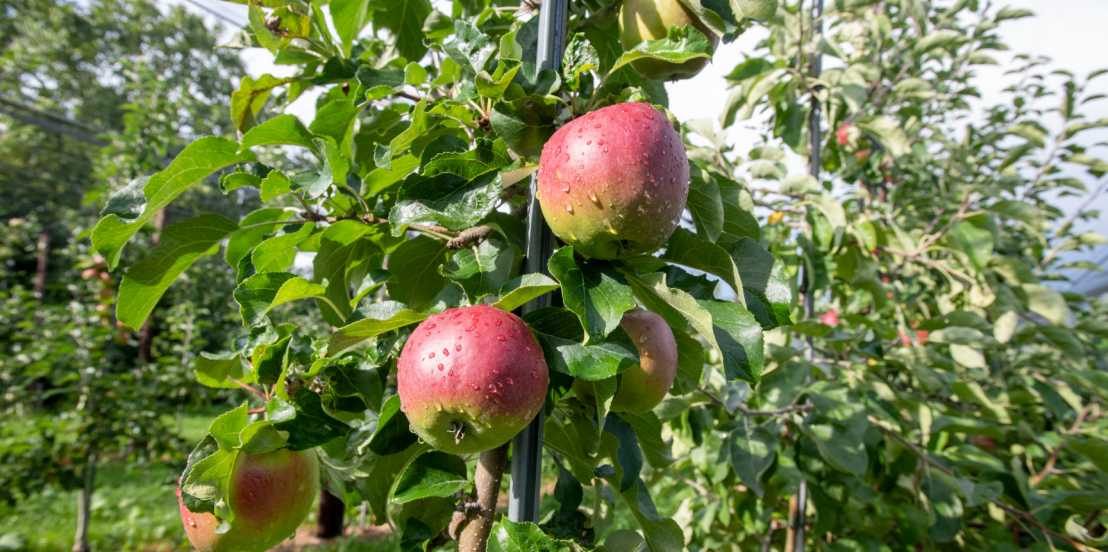Predicting the performance of apple across environments
Insights into the genetic architecture and genomic predictive ability of quantitative traits can contribute to an increase in the efficiency of apple breeding.

Breeding of new apple cultivars is a decades-long process. The efficiency of apple breeding can be increased using marker-assisted selection and genomic prediction. Markers associated with traits of interest can be identified by genome-wide association studies (GWAS) and subsequently turned into DNA tests for marker-assisted selection. To deploy marker-assisted selection on a genome-wide scale, thousands of markers regardless of their association status are utilized for training of a genomic prediction model. The obtained model is then used to make predictions for breeding material with unknown phenotype, which can save costs for phenotyping or help increase selection intensity.
Development of genomic tools in apple allowed for high-density genotyping of diverse apple germplasm (the apple reference population, shortly the apple REFPOP) that was used to build accurate GWAS and genomic prediction analyses. To facilitate analyses of a broad spectrum of traits related to phenology, vigor, productivity and fruit quality, large-scale phenotyping of the apple REFPOP was performed for 30 traits across up to six European locations found in several biogeographical regions. This was possible thanks to a collaboration with Agroscope (Wädenswil, Switzerland), Better3fruit (Rillaar, Belgium), INRAe (Angers, France), Research Centre Laimburg (Auer, Italy) and the National Institute of Horticultural Research (Skierniewice, Poland).
GWAS revealed a total of 59 stable and 277 location-specific associations of markers with the studied traits, 69% of which were novel when compared with 41 reviewed publications. Searching for the best modelling solution for the individual traits, the currently broadest comparison of genomic prediction models in apple was performed and showed an average genomic predictive ability of up to 0.88. The example of the trait red over color, for which the predictive ability was approximately doubled in this work when compared with former studies, demonstrated the potential of the study design for accurate genomic predictions. Comparison of predictive performance with genetic architecture of the studied traits indicated three trait classes, and class-specific prediction strategies were suggested to inform future applications of marker-assisted selection and genomic prediction in apple breeding.
Citation:
Jung M, Keller B, Roth M, Aranzana MJ, Auwerkerken A, Guerra W, Al Rifaï M, Lewandowski M, Sanin N, Rymenants M, Didelot F, Dujak C, Font i Forcada C, Knauf A, Laurens F, Studer B, Muranty H and Patocchi A (2022) Genetic architecture and genomic predictive ability of apple quantitative traits across environments. Horticulture Research.
external page https://doi.org/10.1093/hr/uhac028